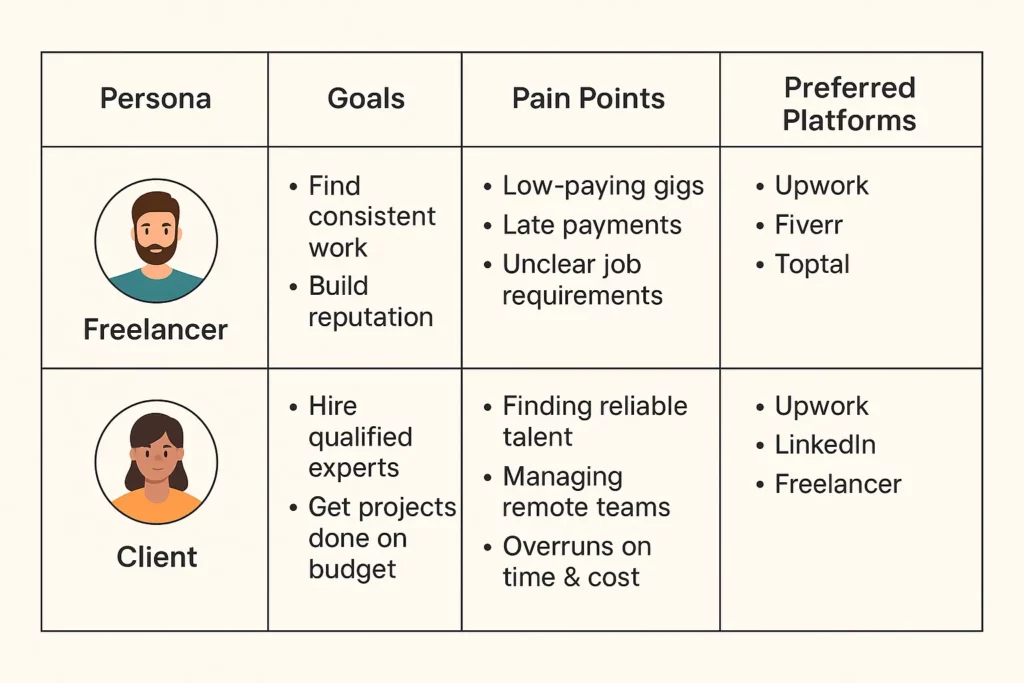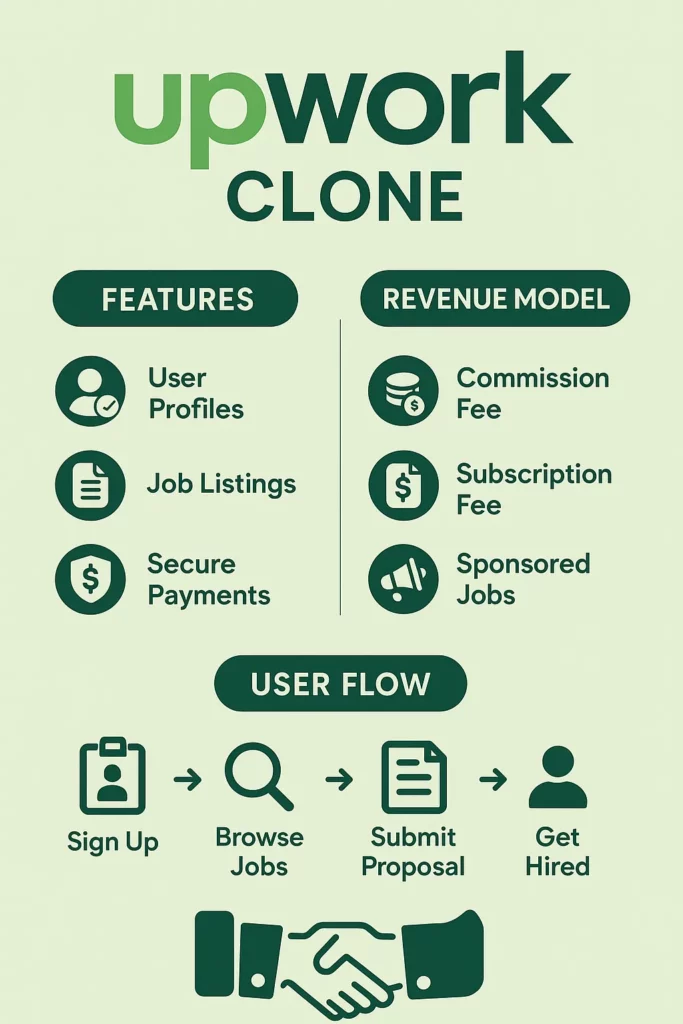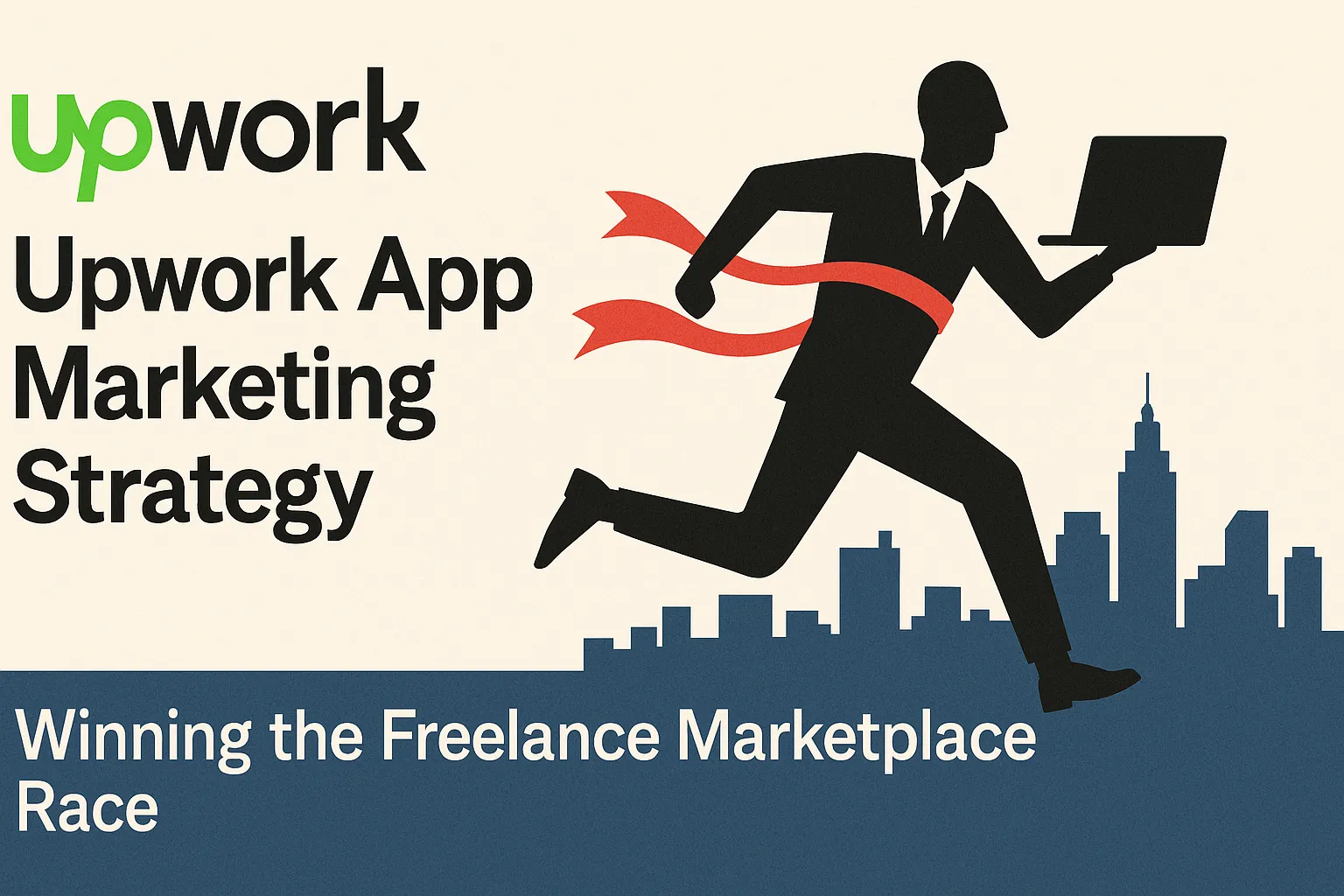Remember when freelancing was a side hustle you kept hush-hush? Now it’s the dream. From graphic designers in Goa to full-stack devs in Berlin, everyone’s jumping into the gig economy. And guess what? Platforms like Upwork are minting gold by making that possible.
But here’s the kicker: building a great Upwork-like startegy app is only half the battle. The other half? Getting people to use it—and not just once, but again and again. That’s where marketing steps in, not as an afterthought, but as your app’s growth engine.
If you’re building a freelance marketplace or already have an Upwork clone in development, this blog is your playbook. We’ll break down how Upwork got massive, what works in 2025, and how Miracuves helps you market smarter—not harder.

Dissecting Upwork’s Playbook: What Made It Stick?
Upwork didn’t just “launch and wait.” It engineered network effects with precision. Here’s how:
1. Double-Sided Trust
Upwork focused heavily on trust and safety: verified reviews, escrow payments, and a ratings system that kept both sides honest. Trust = retention.
2. Retention Over Acquisition
Most startups go big on installs. Upwork invested in re-engagement loops—from job invites to automated follow-ups.
3. Thought Leadership
They positioned themselves as the authority on remote work with resources, case studies, and content marketing gold.
Who Are You Marketing To, Exactly?
Trying to market a freelance app “for everyone” is like shouting into the void. Define your tribes.
Freelancers
- Web and mobile developers
- Designers and creatives
- Virtual assistants and writers
Clients
- Startup founders
- Solopreneurs
- Agencies needing remote teams
Pro Tip: Niche down early. Build marketing funnels for specific verticals. Example: “Find crypto developers” or “Hire content writers in 24 hours.”
Learn More: Build an App Like Upwork – Developer’s Guide with full-stack
Pre-Launch Marketing Tactics That Actually Work
1. Tease with Interactive Demos
Let users click through UI mockups. Tools like Figma prototypes can create FOMO before launch.
2. Run a Creator Waitlist
Gamify access: “Top 100 freelancers get premium badges for life.” That creates exclusivity and sparks viral buzz.
3. Use Subreddits and Indie Hacker Circles
Upwork-type audiences live on niche platforms. Hang where they hang. Listen first, promote softly.
4. Email Warm-Up Series
Turn your waitlist into a movement. Share sneak peeks, founder stories, and use countdown timers to build hype.
Post-Launch Strategy: From Quiet to Viral
1. Give Freelancers a Reason to Share
Referral rewards are cool. But what about visibility? Let users earn homepage placement or profile boosts for inviting others.
2. Curated Gig Categories
Position your app differently: “Handpicked UI/UX designers for startups” instead of generic lists.
3. App Store Optimization (ASO)
Optimize with high-intent keywords:
- freelance writer app
- hire React Native devs
- Upwork alternative for agencies
Monetization Meets Marketing
Want growth? Align your revenue strategy with user value.
Monetization Features Upwork Uses
- Commission fees (10%–20%)
- Membership tiers (freelancer and client perks)
- Bid boosts for visibility
- Freelancer certifications
Growth-Layered Tactics
- Offer reduced fees for early adopters
- Feature top performers on home page
- Push seller stories as marketing content
Data Source: Statista – Freelancing market revenue projections
Going Global vs Local Domination
Upwork went big. But if you’re launching a clone, go smart.
Start Local
- Offer payment methods like UPI (India), GCash (Philippines), etc.
- Hyperlocal gig tags: “Hire Tamil-speaking voiceover artists”
- Geo-fenced marketing on Meta or Google Ads
Then Scale Global
Add multilingual support, international payout systems, and global job filters.
Learn More: Upwork Features Every Startup Should Know About
Smart Tech Features to Power Viral Loops
1. AI for Smart Matching
Let AI suggest gigs to freelancers based on their past bids or reviews.
2. Geo-Tag Gig Requests
Show trending gigs by location—users love seeing what others around them are hiring for.
3. Recurring Gigs
Upwork doesn’t emphasize subscriptions. You can. Offer recurring jobs like monthly blog posts, podcast editing, etc.
How to Build Your Own Upwork App with Miracuves

Conclusion
Your app isn’t competing with Upwork’s budget. It’s competing with their marketing mindset. Think like a user, promote like a storyteller, and keep your flywheel spinning with feedback loops.
At Miracuves, we help innovators launch high-performance app clones that are fast, scalable, and monetization-ready. Ready to turn your idea into reality? Let’s build together.
FAQs
How do I market an Upwork-like app with no budget?
Focus on community-led growth: referrals, Reddit engagement, and organic content creation. Authenticity beats ad spend.
What makes Upwork’s marketing successful?
They combine trust, education, and automation. Plus, their UI is optimized for conversion, not just design.
Should I target freelancers or clients first?
Freelancers usually onboard faster. But without clients posting jobs, they leave. Try a parallel onboarding campaign.
How important is SEO for freelance marketplace apps?
It’s crucial. Long-tail SEO brings high-intent users organically. Build landing pages around gig categories.
Is paid advertising worth it for gig apps?
Yes—if you have solid onboarding. Start with retargeting and category-specific ads like “Hire Shopify Experts.”
Can Miracuves build my Upwork clone and help with strategy?
Absolutely. Miracuves doesn’t just clone apps—we build them smarter with growth and monetization in mind.








